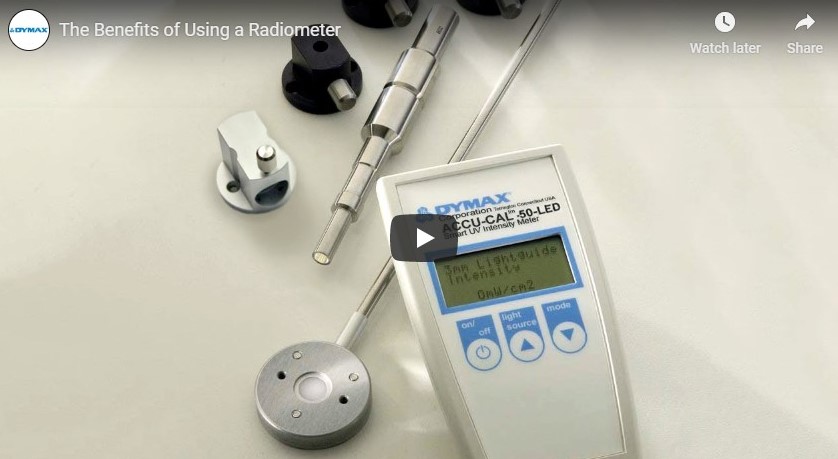UV/LED Radiometer Benefits
A radiometer is an important tool in the monitoring of a light-curing process. Here are a few benefits associated with using one:
Benefit 1: Maintain a Reliable Light-Curing Process
UV-curing bulbs, lightguides, and reflectors can deteriorate over time, causing less UV energy to reach the cure surface, resulting in incomplete cures. As the UV energy decreases, adjustments in the process must be made to maintain product quality. It can be difficult to determine when the UV energy is decreasing. UV wavelengths of light are too short to be seen with the naked eye, requiring the use of a radiometer to monitor intensity. Radiometers can measure the intensity and/or energy associated with light of specific wavelengths and if a light-curing system is providing intensity above the minimum or “bulb change” intensity. A radiometer is to a light-curing process what a thermometer is to an oven-curing process.
Benefit 2: Provide a Safer Work Environment
A radiometer can also be used to determine if any stray UV light is reaching operators or bystanders. This can help ensure a safer, more worker-friendly light-curing process. The Dymax line of ACCU-CAL™ radiometers can measure the intensity of stray or reflected energy to as little as 1 mW/cm2. It is recommended that workers do not exceed 1 mW/cm2 of UVA exposure.
Benefit 3: Measure Transmission Rates Through Substrates
A radiometer can be used to measure the transmission rates of various wavelengths through substrates that sometimes absorb various frequencies of energy. To assure an effective curing process, it is critical to measure the light intensity reaching the cure site below any intervening substrate.
_________________________________________________________
Enjoying This Content? Let’s Stay Connected.
If you’re finding value in our insights, why not get more of it—delivered right to your inbox? Subscribe to receive the latest technical articles, white papers, product news, and expert tips.


